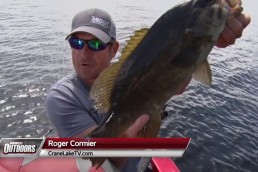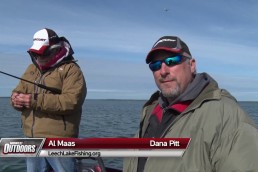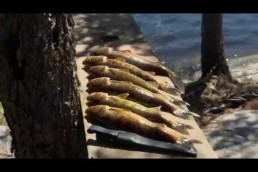Adventure in Minnesota’s Arrowhead Region
SHARE THIS POST
Crisp, single digit temps and a bright, blue winter sky greeted Grant Sorensen and I this past January as we headed for a backcountry drive in northern Minnesota, aiming trucks and snowmobile trailers toward a small, remote lake, hoping to catch big bluegills. I was excited to fish with Grant again, as it had been since the previous winter that we last shared some fishing time together.
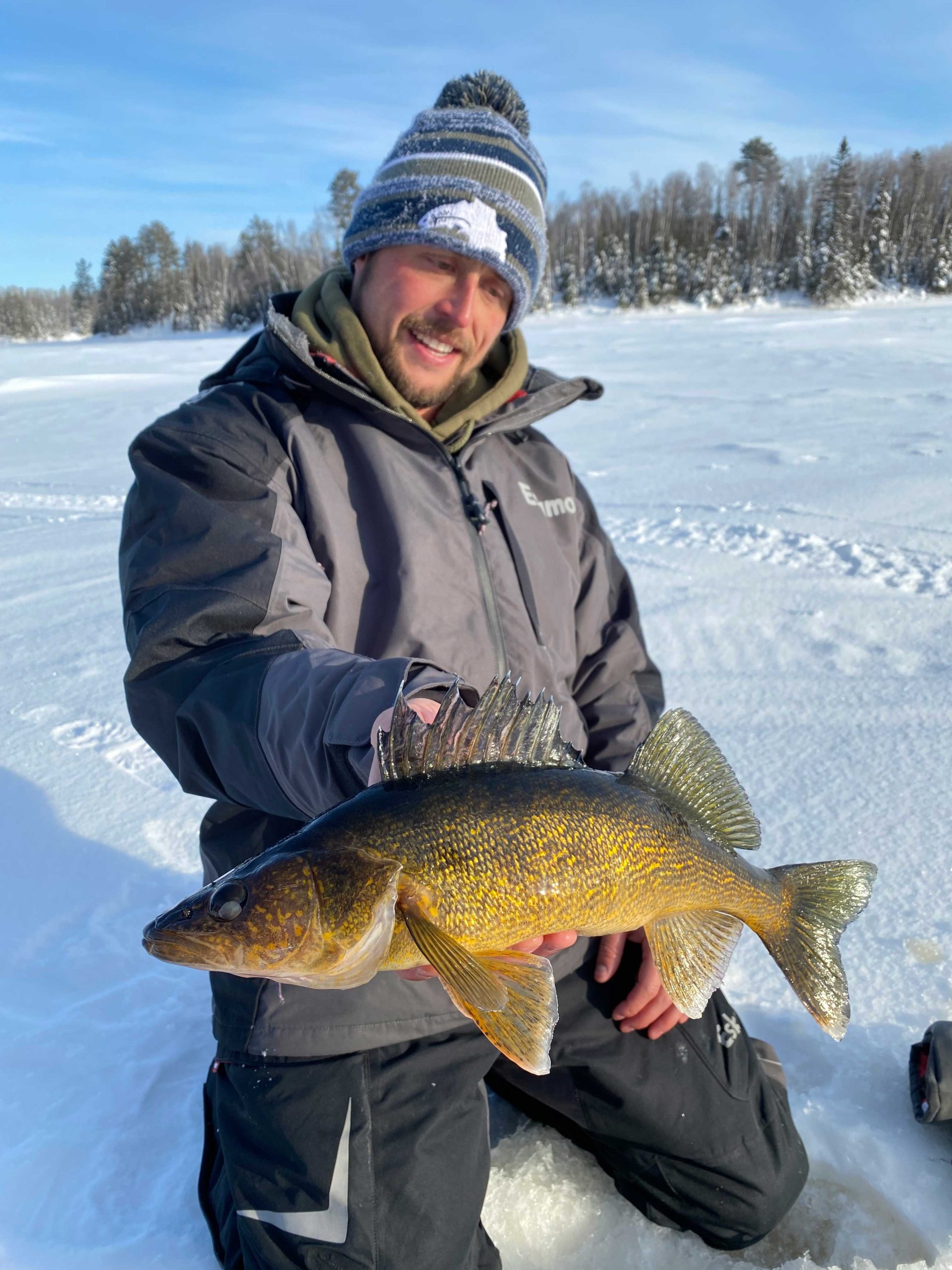
Born and raised in this region, Grant has explored many of the 700-plus lakes in Lake County, a vast expanse stretching from the north shore of Lake Superior all the way to the Boundary Waters Canoe Area near Ely, Minnesota. A four-season wilderness paradise, people venture to this part of Minnesota for some of the most rewarding experiences available in the state. The vast areas of forested land, hundreds of high-quality fishing lakes, and over 170 rivers and streams (and 12 waterfalls!) offer remote outdoor experiences for hunters, anglers, and—this time of year—winter sports enthusiasts who enjoy snowmobiling, skiing, snowshoeing, winter camping and especially ice fishing.
The allure of fishing here in winter is the remoteness. Access to so many lakes via numerous county and unimproved roads, as well as hundreds of miles of snowmobile trails, means winter anglers can basically throw a dart at a board and fish any lake they choose. And they’ll rarely encounter other people while doing so. Between resorts, hotels, motels and cabin rentals, there are plenty of options as far as places to stay, and many of the properties partner with winter season outfitters to provide equipment rentals and guided fishing or wilderness experiences.
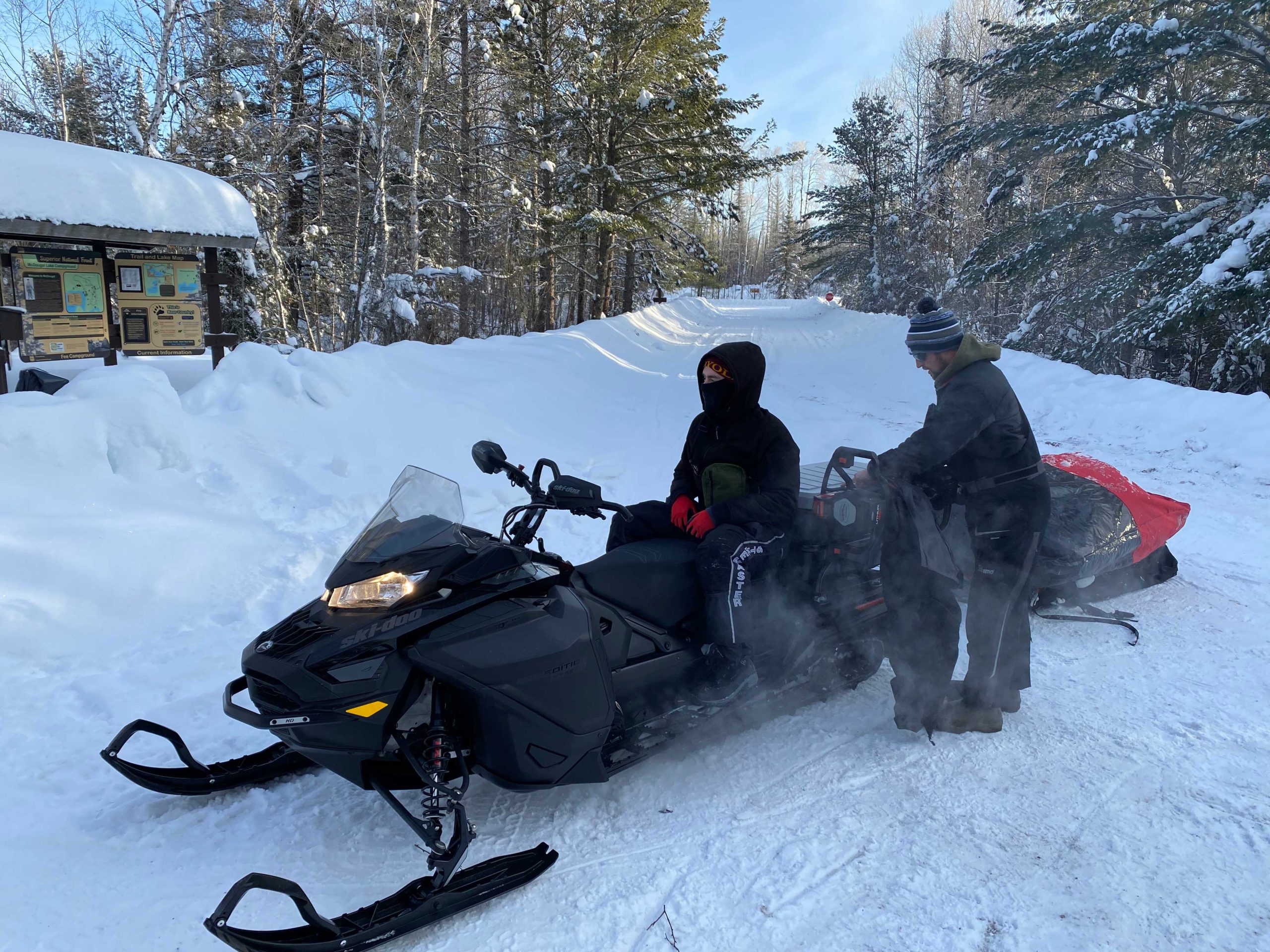
Grant and I drove 45 minutes to the lake access, and after offloading, we were on the ice and drilling holes. Despite a forecast high of 9 degrees, there wasn’t a breath of wind, so with a bright sun we opted to fish outside, and just towed one shelter to haul our gear. Grant had selected a shallow “bog lake” for our fishing day, focusing on bluegills, and we started by punching holes on the 6- to 11-foot breaklines, basically the deepest edge on the lake, in the basin about a mile from the access.
The full array of water is available with so many lakes in (the aptly-named!) Lake County, from deep, clear lake trout and walleye fisheries that also have trophy northern pike, to stocked rainbow trout and brook trout lakes, to systems full of big smallmouths (that do bite well in the wintertime!), slab crappies, jumbo perch and big bluegills.
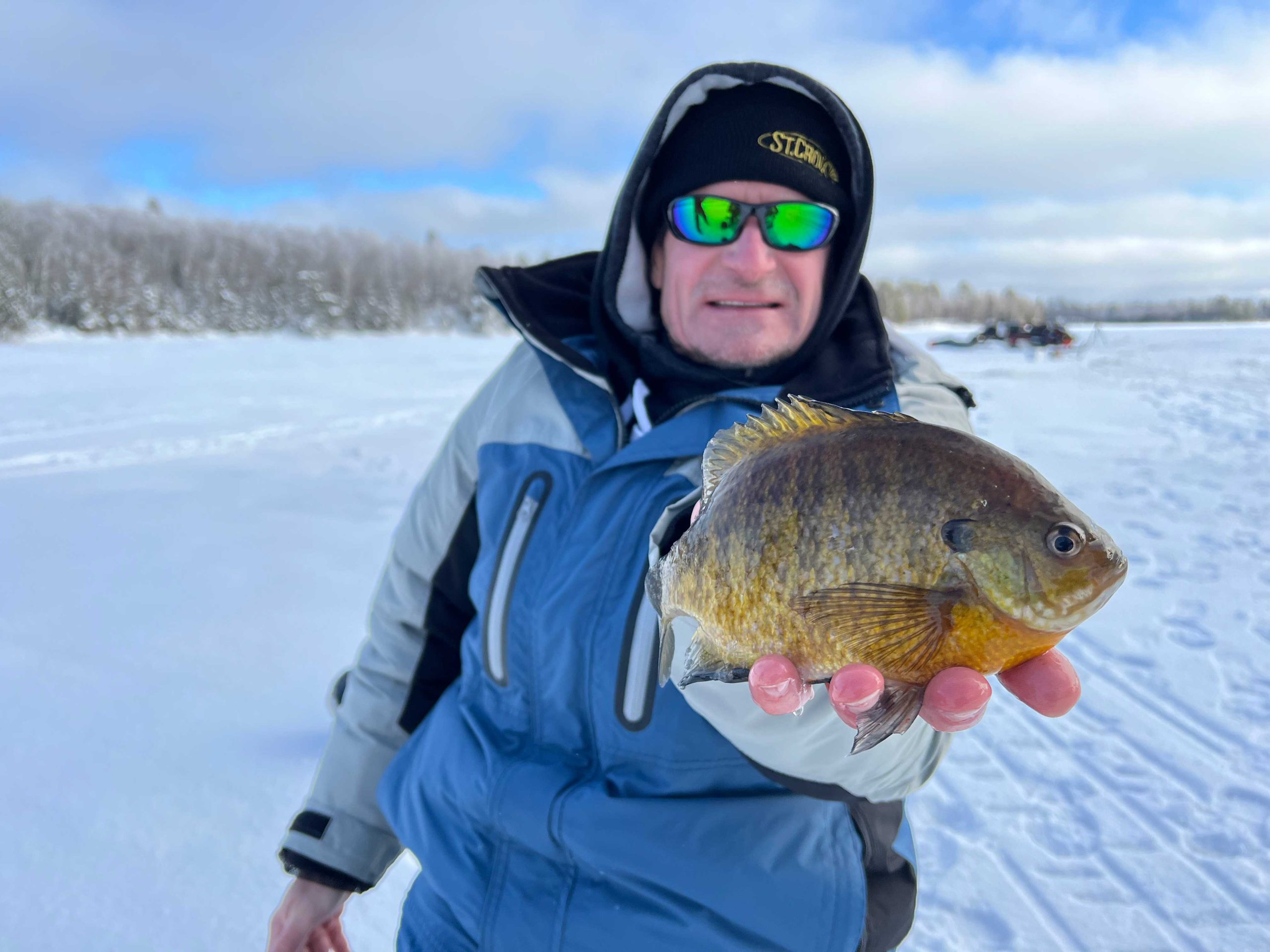
I tied on a tungsten jig, threaded on a waxworm, and dropped down the first hole. Within the minute, my St. Croix Tungsten Tamer rod buckled over, and I thought I had the bluegill of the century on for a moment, until an 18-inch walleye slid onto the ice instead. A nice start and a bonus fish to get us started!
Are you enjoying this post?
You can be among the first to get the latest info on where to go, what to use and how to use it!
We had punched a series of holes along the breakline, and Grant and I worked methodically along fishing each hole. In such shallow water, it’s important not only to be quiet on the ice, but to be patient while fishing each hole to allow some fish to come back to you. Even walking on the ice can temporarily vacate fish from beneath your fishing area when you’re in less than ten feet of water, and usually you won’t find a big school right under your feet in these depths.
In shallow bog lakes, the fish tend to roam anyway, often in circles around the breakline in the deepest bowl of the lake. However, it wasn’t long before we had some good-quality fish topside: a beautiful trophy 10-incher for Grant, as well as a number of fish 9 inches-plus. It’s what we came for, and it was fun!
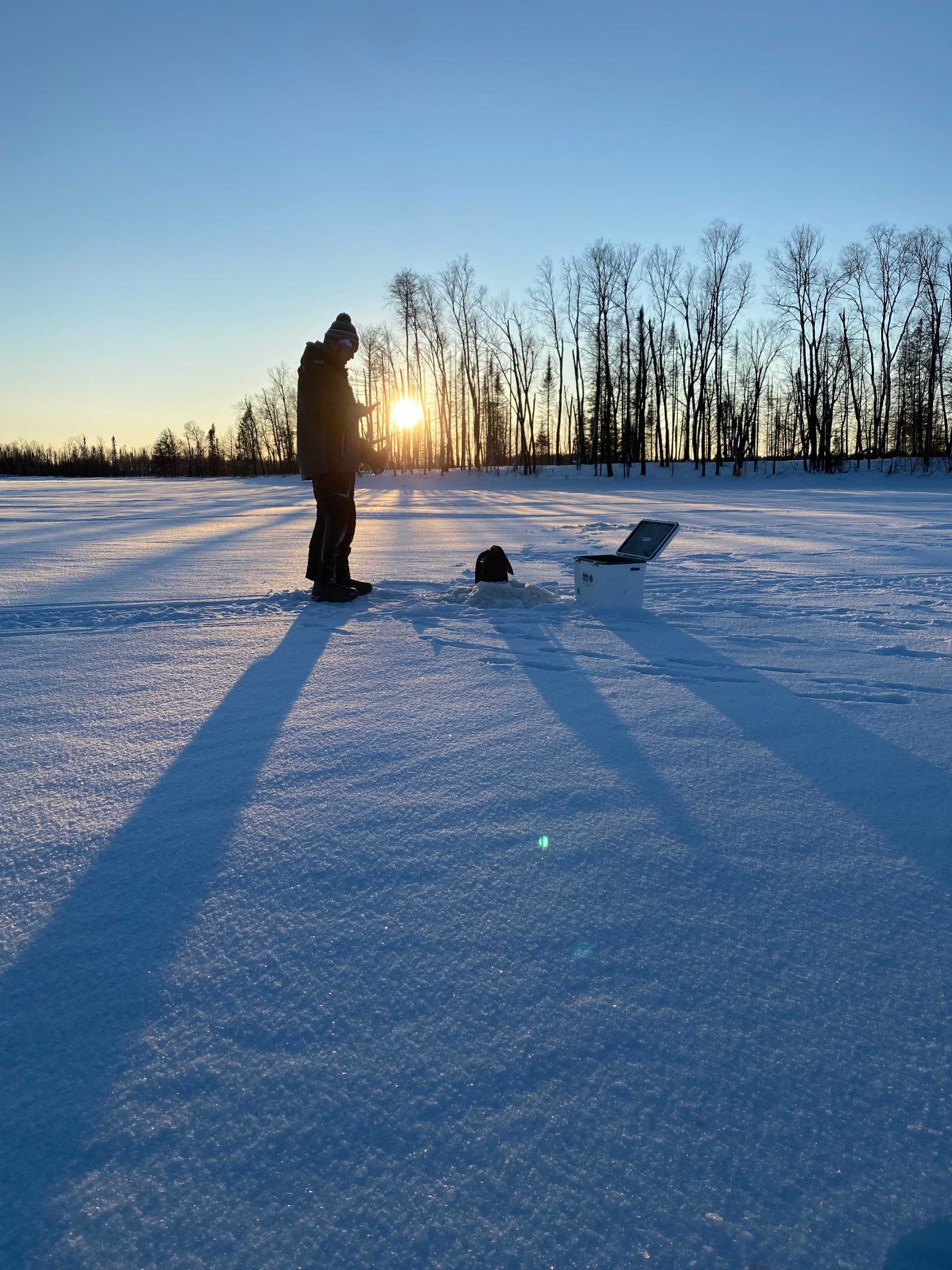
We had a stellar start to our day, catching huge bluegills while being serenaded by a pack of wolves howling incessantly, hair-raisingly close to the shore of the lake, presumably over a fresh kill. So very cool! There’s simply no substitute for the wilderness fishing experience!
Late morning, Grant and I had crisscrossed the basin edge and fished our holes heavily, so we decided to give the fish a break and explore a different basin of the lake. After a quick sled ride, we positioned a few hundred yards from an incoming flow and some steaming, open water. Current moves through all the waterways in northern Minnesota, including some areas with so much flow that portions of some rivers stay open all winter long despite the frigid temps.
After an hour of drilling holes and fishing at a safe distance from any unsafe ice, we were unimpressed by our catch and returned to the other side of the lake to re-open our holes that had started to freeze over during our absence. Back in our hotspot, in conjunction with a weather front coming in that kicked up a little wind, we enjoyed a hot bluegill bite, finishing out the afternoon on a high note.
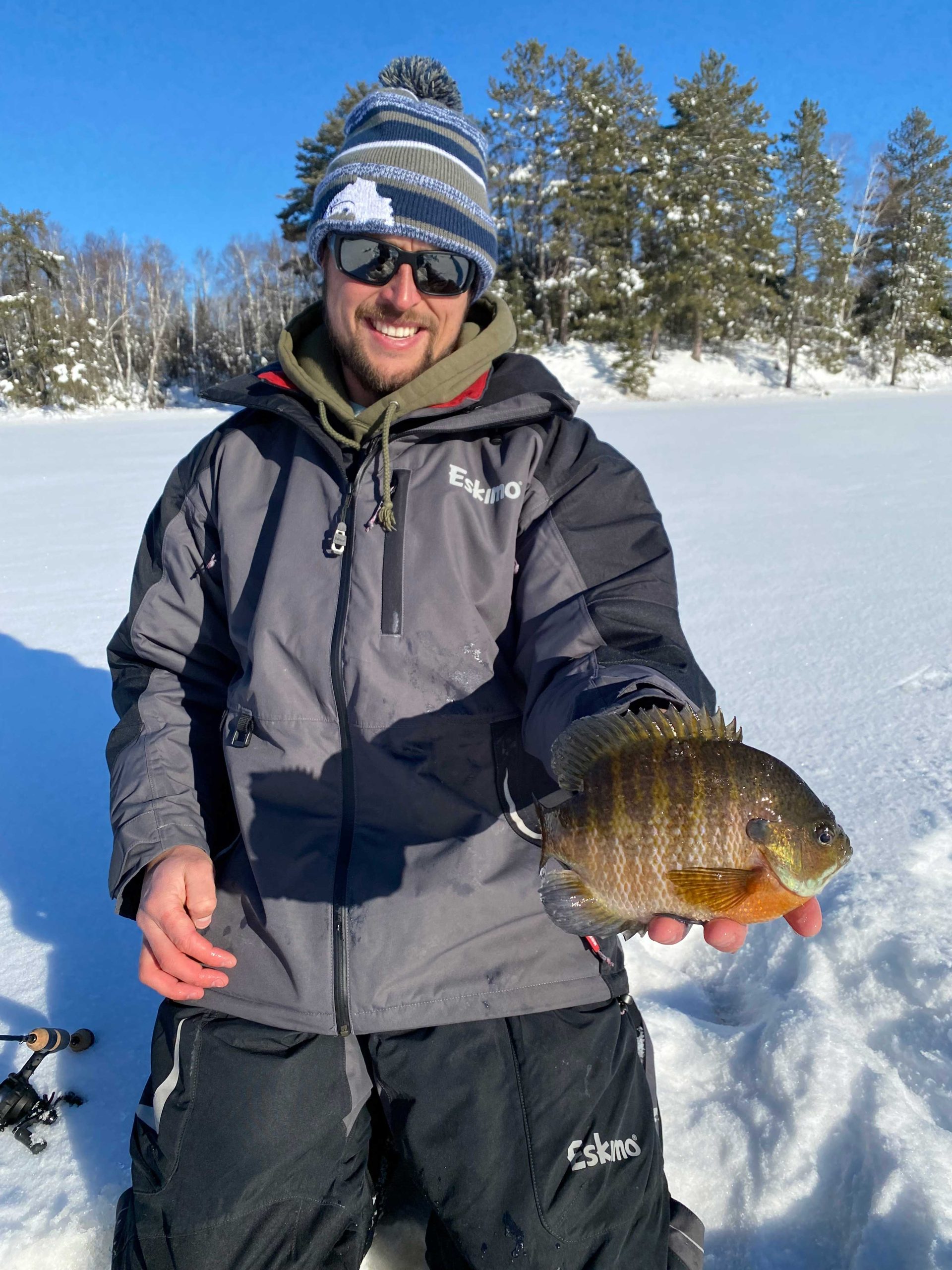
When discovering a lake with trophy bluegills, it’s important to protect these fisheries. It doesn’t matter if the lake is remote and receives virtually no fishing pressure. Sure, keep a meal of a few panfish on the smaller side of the size spectrum as a reward for a great fishing day, but release trophy-size specimens. In the far north, a 10-inch bluegill may be close to 10 years old because the growth rates are so slow in cold water. By releasing top-quality panfish, whether they are bluegills or crappies, and removing smaller specimens that compete for food, you increase the overall quality of the fishery. Plus, the next time you return to the same lake, those fish will be even bigger!
A wide variety of accommodations are available for visitors to Lake County. Resorts and lodges offer snowmobile and winter gear rentals, fishing guides, easy access to lakes and trail systems, and winter outfitter adventures like sled dog trips, winter camping, or snowshoeing and cross-country skiing. With the sheer number of lakes to choose from, as well as the entire spectrum of Minnesota’s gamefish to target, it’s truly an angler’s paradise.
MWO
SHARE THIS POST
Did you enjoy this post?
You can be among the first to get the latest info on where to go, what to use and how to use it!

